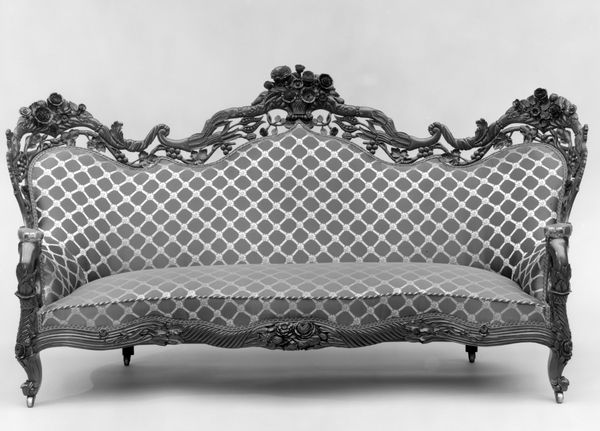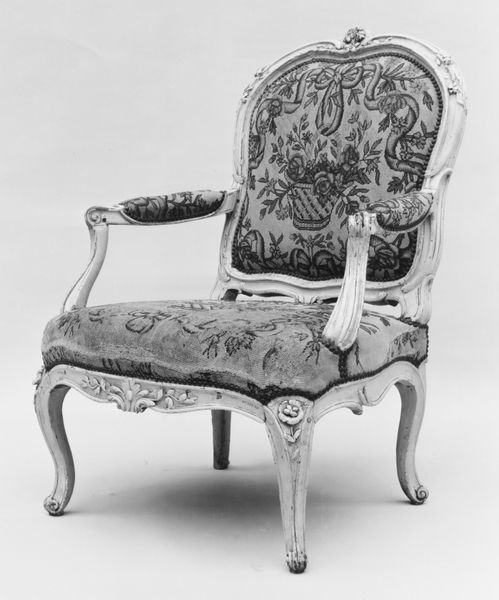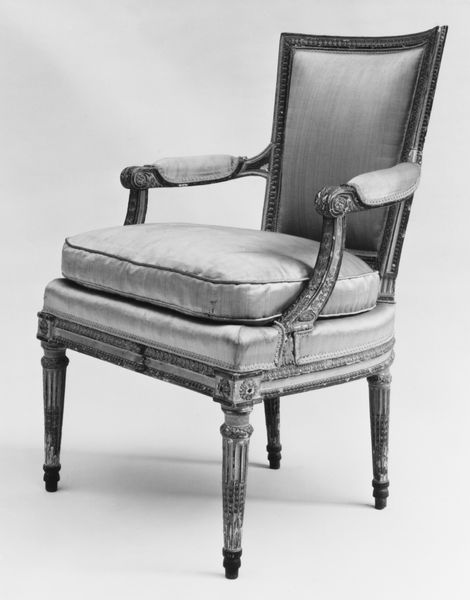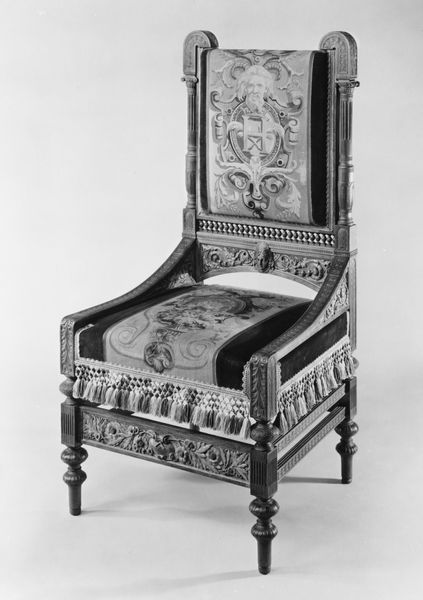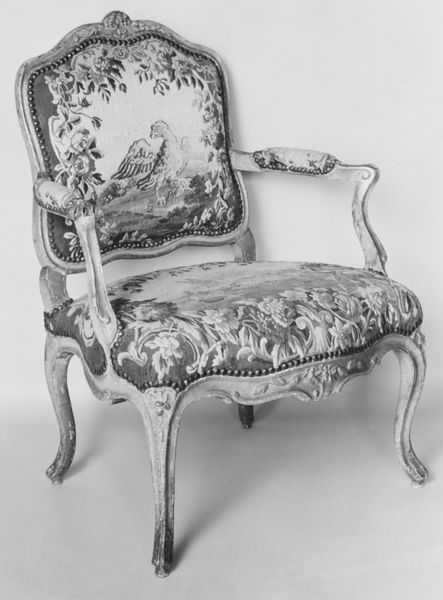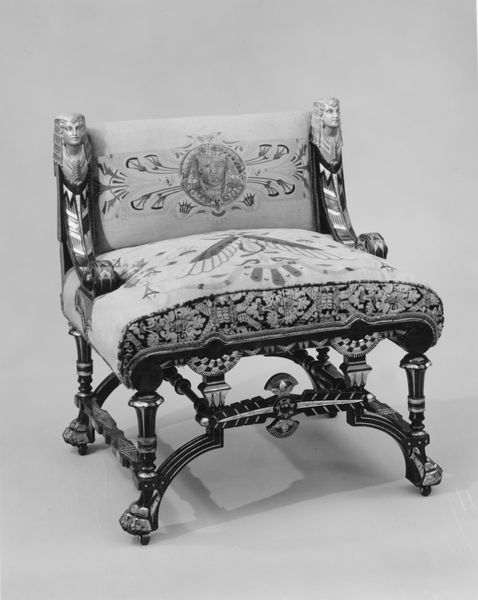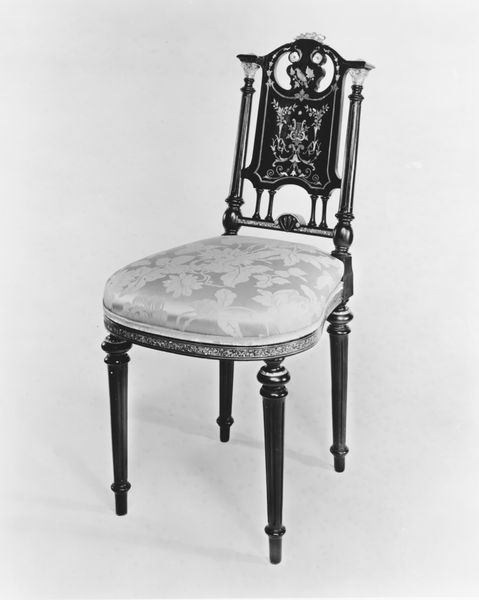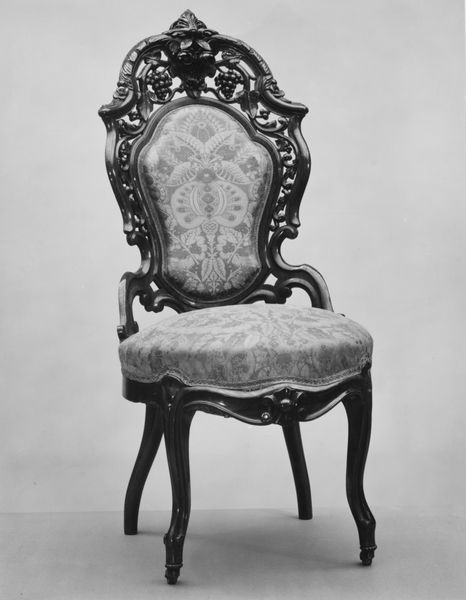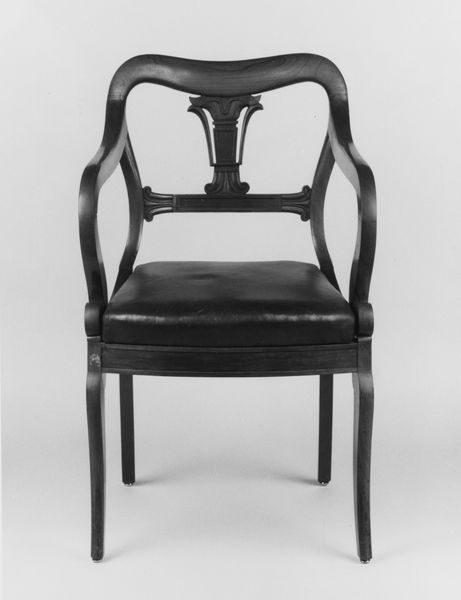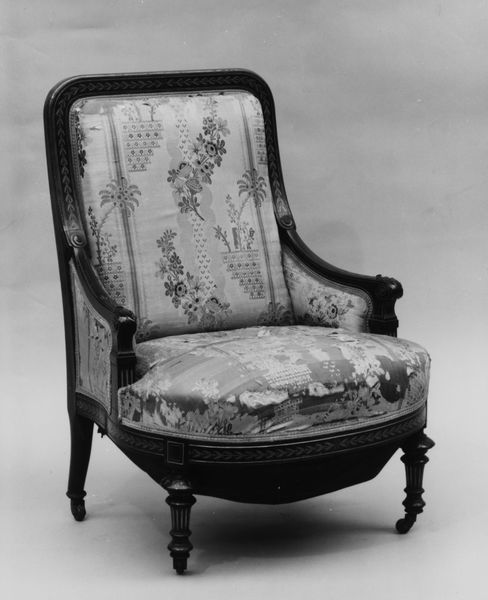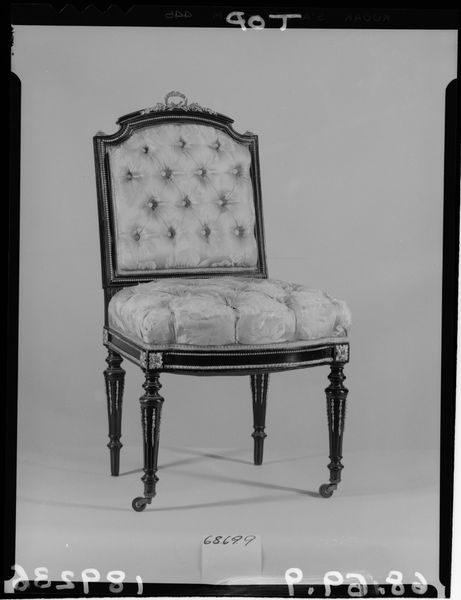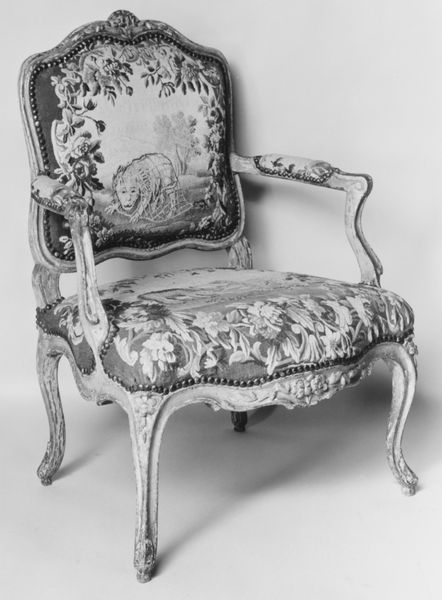
#
3d sculpting
#
3d model
#
3d image
#
3d printed part
#
plastic material rendering
#
virtual 3d design
#
sculptural image
#
3d shape
#
metallic object render
#
3d modeling
#
united-states
Dimensions: 30 x 82 1/2 x 24 1/2 in. (76.2 x 209.6 x 62.2 cm)
Copyright: Public Domain
Curator: We’re looking at a sofa crafted between 1810 and 1820 by Duncan Phyfe. It’s currently held at the Metropolitan Museum of Art. Editor: The severe angles and stark material presence, probably mahogany, immediately strike me as unexpectedly imposing for a sofa. Curator: It's a prime example of Phyfe’s neoclassical style, adapting ancient Greek and Roman forms. Note the exquisite carving. You can almost feel the labor, the dedication of the artisan bringing the piece to life. Editor: The paw feet definitely evoke power. This wouldn't be just for reclining, right? This would function as a status symbol. Look at those radiating pleats of the cushions; each detail tells a tale of ambition. Curator: Precisely! These objects communicated wealth and refinement, showcasing both taste and access to materials, particularly fine hardwoods, which had to be transported long distances. Who was benefitting and under what terms from the access to those resources? Editor: And those materials gain significance when understanding Phyfe’s aspirations, who was becoming one of the most well-known cabinet makers of the early 19th century. The sofa form became very popular in the first decades of the 19th century for drawing rooms. It could serve for receiving callers during daytime or after-dinner conversation during the evening. Curator: The use of mahogany in furniture construction tells its own complex history of colonization, resource extraction, and trade routes. Phyfe was at the center of a supply chain that relied on exploitative labor practices. Editor: Fascinating how it carries not just literal weight but historical and moral weight as well. The motifs themselves speak of a time of political and social change and, yet, some motifs persist, echoing down through generations, carrying adapted meaning. Curator: Indeed. Seeing the "Sofa" beyond its surface allows us to unpack those connections to the larger world around it. The Phyfe name quickly became emblematic of this unique time in early United States furniture. Editor: Examining a seemingly simple sofa reveals multiple layers of visual language, social history, and material realities all interwoven.
Comments
No comments
Be the first to comment and join the conversation on the ultimate creative platform.
